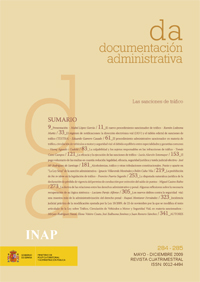The voluntary payment of the fines in limited quantity: legality, efficiency, juridical safety and judicial effective guardianship
DOI:
https://doi.org/10.24965/da.v0i284-285.9655Keywords:
Administrative procedure, Administration sanctioning, Traffic, Road safety, SpainAbstract
The new regulation of the administrative sanctioning procedure is qualified by the preamble (V) of the Law 18/2009, dated November 23, of reform of the Law of traffic and road safety, as focal point of the legislative reform. Between the most relevant innovations of this regulation tells itself the introduction of a sanctioning brief procedure that, actually, more than a procedural “iter” than simplified steps, it is only an expeditious way of putting end to a procedure. The present article tries to test an offer of explanation of the institution across the idea of weighting of constitutional beginning realized by the legislator. This construction drives, as consequence, to support the thesis named like “limited resorted” of the sanction paid voluntarily in limited quantity. Finally, it analyzes diverse questions on the juridical administrative regime of this institution and that of the requirements, in relation with it, of the constitutional prohibition of the bis in idem.











